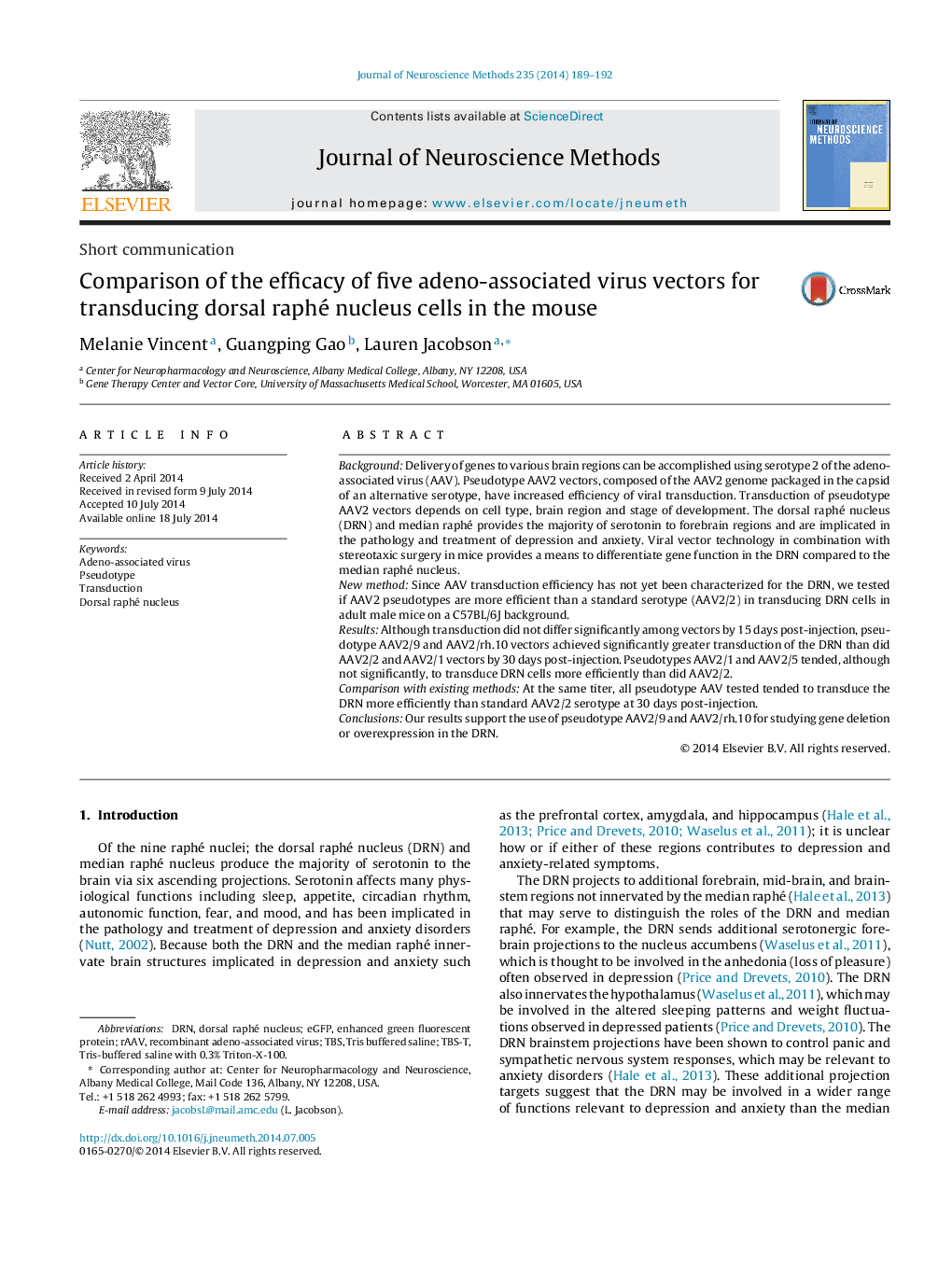| Article ID | Journal | Published Year | Pages | File Type |
|---|---|---|---|---|
| 6268634 | Journal of Neuroscience Methods | 2014 | 4 Pages |
BackgroundDelivery of genes to various brain regions can be accomplished using serotype 2 of the adeno-associated virus (AAV). Pseudotype AAV2 vectors, composed of the AAV2 genome packaged in the capsid of an alternative serotype, have increased efficiency of viral transduction. Transduction of pseudotype AAV2 vectors depends on cell type, brain region and stage of development. The dorsal raphé nucleus (DRN) and median raphé provides the majority of serotonin to forebrain regions and are implicated in the pathology and treatment of depression and anxiety. Viral vector technology in combination with stereotaxic surgery in mice provides a means to differentiate gene function in the DRN compared to the median raphé nucleus.New methodSince AAV transduction efficiency has not yet been characterized for the DRN, we tested if AAV2 pseudotypes are more efficient than a standard serotype (AAV2/2) in transducing DRN cells in adult male mice on a C57BL/6J background.ResultsAlthough transduction did not differ significantly among vectors by 15 days post-injection, pseudotype AAV2/9 and AAV2/rh.10 vectors achieved significantly greater transduction of the DRN than did AAV2/2 and AAV2/1 vectors by 30 days post-injection. Pseudotypes AAV2/1 and AAV2/5 tended, although not significantly, to transduce DRN cells more efficiently than did AAV2/2.Comparison with existing methodsAt the same titer, all pseudotype AAV tested tended to transduce the DRN more efficiently than standard AAV2/2 serotype at 30 days post-injection.ConclusionsOur results support the use of pseudotype AAV2/9 and AAV2/rh.10 for studying gene deletion or overexpression in the DRN.
